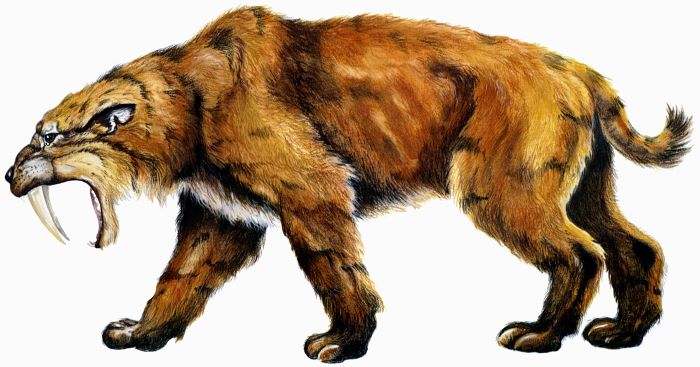Since the time of the primitive cat-ancestor Cimolestes in the late Cretaceous, saber-toothed carnivores have arisen on three occasions in three different carnivore groups. The earliest were the creodonts, followed by the nimravids, and finally the saber-toothed cats, including Smilodon.
None of these are considered to be directly ancestral to the cats living today. Saber-toothed cats appeared at the start of the Miocene and survived until about 11,000 years ago, which meant that they would have been known to early humans.
They had impressive, backward curving canine teeth in the upper jaw that were so long—up to 6in (15cm)—they ran down the sides of the lower jaw outside the mouth when it was closed. To be able to use these teeth effectively, saber-toothed cats had an enormous gape—they could open their mouths about 120 degrees.
The “sabers” broke more easily than other teeth because they were so large, but their serrated edges could be used for cutting through tough hide or biting off chunks of flesh.
No one knows why the saber-toothed cats became extinct. Some scientists think a decline in prey led to their demise but there is evidence to refute this. Others suggest that they were unable to compete with the more recently evolved pantherines and cheetahs, with which they latterly coexisted. Certainly, the newer cats were swifter hunters and possessed teeth less vulnerable to breaking.


